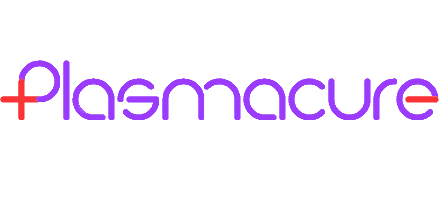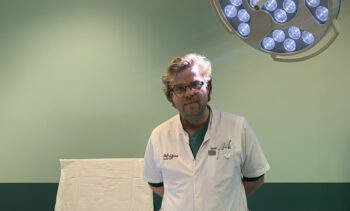As head of the wound center of Alrijne Hospital (surgery department) and one of the principal investigators in a clinical study with PLASOMA of Plasmacure, Wouter has been focusing on wound care since 2010. He hopes to complete his PhD: ‘Optimization of best practice wound care in the Netherlands’ in 2023. Wound care is complex, he noticed that very little is known about which treatments give the best results in various situations. And that while it can be a huge worry for patients, and the financial burden on healthcare is enormous. In this interview, Wouter explains which obstacles he sees and where improvements and advancements can be made.
Why are you so committed to better wound care?
“Wound care is neglected worldwide. There is no recognition. The diabetic patient group has an enormous burden to bear, there is a risk of amputation and the healthcare costs are very high. Many patients are 70+. There is no patient association for chronic wounds and people are often from a population group who are less likely to stand up for themselves.
Because the care is divided over all kinds of disciplines – such as general practitioners, specialists, home care and wound care – almost no data is available. There is never anything in the news about diabetic feet or chronic wounds. That is very strange when you consider the numbers and know that they are going to increase. The annual costs of wound care related to diabetic foot are as much as the costs for breast, prostate and lung cancer combined, according to research*. People are also getting older and – also due to increasing obesity – more people are going to develop diabetes. My mission is to raise awareness and to provide better care for this patient group.”
“The annual costs of wound care related to diabetic foot are as much as the costs for breast, prostate and lung cancer combined”
“Wounds that do not heal within 4 to 6 weeks are chronic and should be recognized early and treated in a multidisciplinary setting where the cause (etiology) is investigated. They represent a major challenge for the health care system. It is estimated that 2% to 3% of people in the Netherlands suffer from chronic wounds, so this is 350,000 to 500,000 people.**”
How is it possible that there is so little information available about wound care?
“In the Netherlands, health care is part of a care chain: first-line care is care that does not require a referral, such as general practitioners and physiotherapists. For second-line care a referral is needed, such as hospitals and clinics. If highly specialized care is required, the patient will be referred to third-line care. Preventive care is referred to as primary care.
Wound care is complex. This is partly due to the fact that there are so many disciplines involved across the entire healthcare chain: carers, home care organizations, general practitioners, skin therapists, specialists such as dermatologists and vascular surgeons, orthopaedic and plastic surgeons and wound nurses. There is no overarching protocol. And there is virtually no data, everyone works differently and has to deal with a different type of reimbursement. Without this data, it is very difficult to compare which procedures are the most effective and how and where patients are treated; the right patient for the right treatment. Because of this it is difficult to determine the quality of wound care.”
Multidisciplinary approach for diagnosing and gaining insights
“Twelve years ago at Alrijne Hospital, I started to focus fully on the subject of wound care from surgery. The spearhead of Alrijne Hospital responds to the increasing need for the care of the chronically ill and the elderly. It struck me that very little is known about wound care and what we all do in that field. It is my mission to shed light on this issue. At Alrijne Hospital, I was trained in a wide range of fields, with a focus on wound care. Our data shows that approximately 82-83% of patients can be treated effectively in first-line care. They do not need additional interventions from a hospital. However, if a wound doesn’t heal, further investigation is necessary. For example, there can be issues with the blood circulation, there could be an inflammatory reaction or skin problem. Then a diagnosis is required via second-line care. If the diagnostics for underlying problems are not carried out, the wound will not heal. In 2015 it took an average of 19 weeks at Alrijne Hospital before a diagnosis or an intervention happened. The national average is 30 weeks. It is regrettable to offer it so late.
I now have a team around me with whom we can take steps to improve that care. You must continuously be financially accountable. With our own wound center we check that we are working cost-effectively, which means that we are able to expand responsibly. Our pathological findings (research into the causes and processes within diseases) give information about the clinical pictures and these are getting worse. This helps decrease the workload of others. In my opinion, at least 20 extensive specialized wound care centers are needed nationwide to ensure this multidisciplinary offer in healthcare.”
Accelerated early diagnosis protocol
“The wound center of Alrijne Hospital has developed a protocol in which stagnant wounds are referred to a hospital within 5 weeks. This is much faster than the current national average (30 weeks). If wounds stagnate, it is much better in many ways to detect this as early as possible. If we use this protocol nationally, we can save more than 130 million annually. The protocol is comparable to the ‘quality standard for wound care 2017’. An article about this will soon be published in ‘Advances in skin and wound care’.”
How can you get this knowledge from second-line care in first-line care and strengthen the chain?
“If a wound doesn’t heal despite first-line care, it needs to be diagnosed as soon as possible. Unfortunately, we still see that a real assessment of the situation (triage) in first-line care does not really happen. That is why we have brought expertise from the hospital to first-line care in a setting similar to an outpatient department in general practice. This showed that approximately 10% of patients with a wound still required diagnosis or treatment from second-line care.”
“We want to strengthen the entire healthcare chain.”
“In the Netherlands, better home care and informed general practitioners (GP) is needed. In principle, the GP is the one who is legally and medically in charge. Home care organizations often take care of wound care, creating a risk that the prompt is missing to refer the patient to second-line care if necessary. There must be a connecting triage system, so that a patient assessment takes place after 5 – 6 weeks. In our region, we have taken steps to facilitate GPs to participate in this accelerated protocol. First we did this physically, but now we do it via e-health. This allows GPs to request a teleconsultation. They will then receive advice within 24 hours for further policy or the advice to refer the patient to us. The first results are very positive. The next challenge is to develop centers that offer extra value to first-line care, while guaranteeing rapid diagnosis and intervention. We want to strengthen the entire healthcare chain.
When referred to a second-line wound center, a multidisciplinary diagnosis should be made. A dermatologist, vascular surgeon, orthopaedic surgeon, internist, rehabilitation physician and a plastic surgeon are needed. It is also a requirement to be able to admit acute patients if necessary, so 24/7 care is essential. We train our multi-disciplinary team in Alrijne Hospital Wound Center. The total amount of hours worked adds up to the equivalent of 10 full-time positions. In the Netherlands there are now more than 70 wound expertise centers (WECs), but these are not certified and are not inspected. The contrast amongst the various centers is enormous. The next aim should be to upgrade these second-line wound centers nationwide where necessary.”
Why is the wound center of Alrijne Hospital participating in a clinical study with PLASOMA?
“For the best treatment, continuous refinement and research about what is best for the patient is needed. I think you should conduct scientific research and critically examine which products can make a contribution. If you take yourself seriously as a wound center, you should also participate in these kinds of studies. Plasmacure has already achieved great results with case studies. Expectations with PLASOMA are positive. I was involved in writing the protocol for the clinical trial. That inspires me and I am curious about the results. It takes a lot of time and energy, so to participate in a study there must be real potential and added value and it must be well organised. All of these conditions were met: Plasmacure is very well organised, we have very accessible contact and we receive support in all kinds of areas. At each step of the process, opportunities for improvement are explored.”
How does PLASOMA fit into the healthcare chain?
“If PLASOMA makes a genuine contribution to treatment of wounds – which has already been partially demonstrated and is currently being investigated in clinical studies – then the question is which group of patients will benefit most from this treatment. If it works, it is of course useful for any wound, but the added value lies with stagnant wounds, as long as there is considerable acceleration. This will need investigation in order to reach a clear outcome. We now see it as a treatment for wounds that stagnate despite adequate care. We know that with a complex long-standing wound that has difficulty closing, improvements can be made if acceleration is effected in that group. Quality of life can be much improved, but additional disorders are also prevented that arise from or are aggravated by, for example, lack of exercise. In addition, many costs can be saved. If cold plasma can make a contribution, that is a positive step all round. This would not be a solution for underlying conditions.
Where PLASOMA can be used – whether in first-line or second-line care – this has not yet been determined. If used in a first-line care setting, there must be effective protocols and the treatment must be well-explained. Placing it in home care would be useful, but then a range of devices would be required. The reimbursement of treatments remains an important issue.”
What do you think of PLASOMA cold plasma treatment?
“Once you know how it works, you’re finished within 15 minutes. It only takes 2 minutes per treatment. It takes 5 minutes to stick it on, etc. That’s because we have set up a special room for this so that everything is at hand. If you have to install everything at people’s homes, it takes a little more time but is still a viable option.”
References:
* M. Kerr, E. Barron, P. Chadwick, T. Evans, W. M. Kong, G. Rayman, M. Sutton-Smith, G. Todd, B. Young, W. J. Jeffcoate. The cost of diabetic foot ulcers and amputations to the National Health Service in England. 2019
** Wouter Brekelmans, MD, Boudewijn L. S. Borger van der Burg, MD, Liesbeth N. Leurs, PhD, RobertJan Hoogendoorn, MD, Frank B. J. M. Zuure, MD, Rigo Hoencamp, MD, PhD. Optimization of Best Practice Wound Care in the Netherlands. 2020


